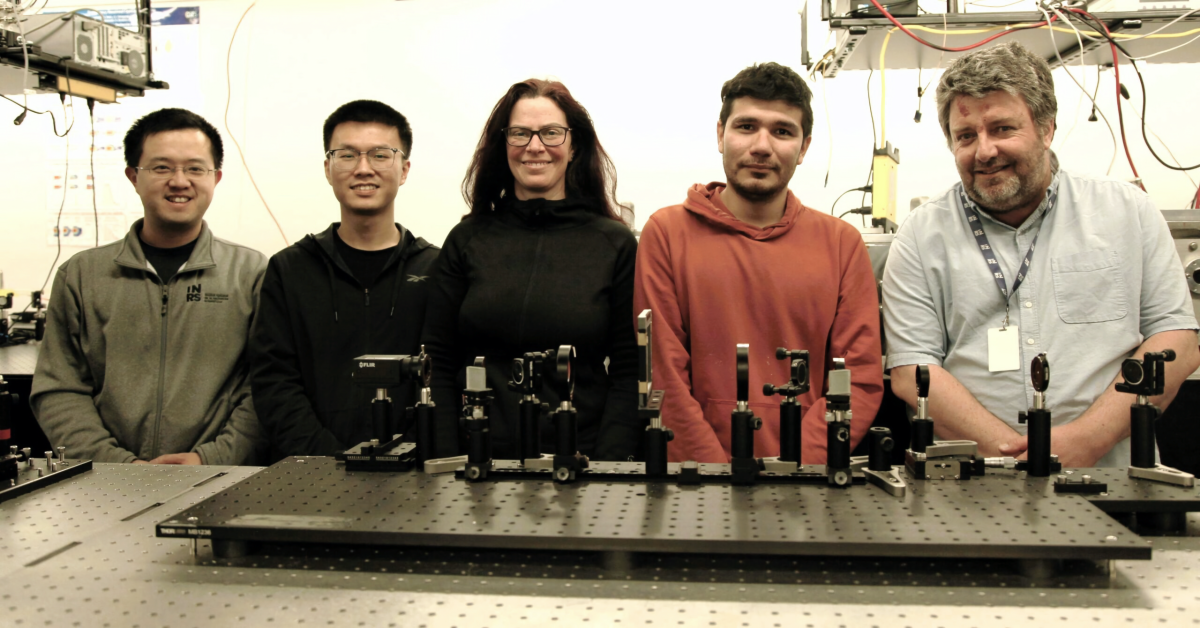Scientists have created a blazing-fast scientific camera that shoots images at an encoding rate of 156.3 terahertz (THz) to individual pixels — equivalent to 156.3 trillion frames per second. Dubbed SCARF (swept-coded aperture real-time femtophotography), the research-grade camera could lead to breakthroughs in fields studying micro-events that come and go too quickly for today’s most expensive scientific sensors.
SCARF has successfully captured ultrafast events like absorption in a semiconductor and the demagnetization of a metal alloy. The research could open new frontiers in areas as diverse as shock wave mechanics or developing more effective medicine.
And if you were to watch it at 60Hz you would need 82+ years to watch that one second. Hope you know exactly where you’re wanting to look or can scrub it really fast!
Edit: I can’t math. It is 82,000 years.
Finally, it’s my 144Hz gaming monitor’s time to shine. I’ll be done like 50 years sooner than the rest of you losers.
deleted by creator
That’s what the 81+ means
Does that fall under “technically correct”?
Off by 81k years, sounds good to me
Finally a use for the needle in a haystack multimodal LLMs for video.
deleted by creator
I was doing some napkin math for how many femtoseconds there are between each frame and how that compares to Planck time but this response does a better job capturing how cool this is.
I’m curious on your calculations nonetheless.
A femtosecond is 10^-15 seconds. Tera Hertz frequency is equivalent to a period length of 10^-12 second, a pikosecond.
So with 156 tera Hertz a frame is around 6.4 femtoseconds.
Planck time is around 10^-43, so still some way to go until we reach the clock speed of our universe :)
Hope I did that right!
So, considering the speed of light is approximately 3e8m/s, a frame time of 6.4fs means light can move 1.92 micrometers per frame.
If they recorded at that speed for 1 hour and played it back at 1 frame per second, all the time since the Big Bang will have passed before they get through 40 minutes of recording.
Almost, but not quite. A single second recording played at one fps would take roughly 5 million years to finish, so a 40 minute recording would take 12 billion years to finish at 1 fps. The big bang was 13.8 billion years ago.
I initially thought, “why would we need this,” but these two comments helped me readjust. I don’t need it but we’ll find a use for it.
Slo-mo guys just show up with a fat stack of hundos
After seeing the one where they slam Dan’s face with a ball and you see his skull moving under his skin I realized there can be entire fields of study around insanely fast cameras. What we see in real time doesn’t even compare. Also the one where Gav shows how CRTs work is still my favorite.
Assuming they’re still around. The whole Rooster Teeth getting shut down by Warner Bros a few weeks ago.
Slo mo has nothing to do with RT I thought? Always assumed that was Gavin and Dan’s creation, and was around even before Gavin showed up to RT.
Not sure, but they’re part of the rooster teeth productions. Didn’t know how the situation is going to affect them.
From what I’m seeing online is they’re affiliated with RT but it looks like Gavin owns the company.
deleted by creator
When the hell did that happen? That’s crazy. They seem to be still doing videos, so there must be some sort of split.
Citation needed.
deleted by creator
Where’s video?
Damn this sounds really impressive, especially the possibilities this could offer in medicine.
Must have been really expensive to develop!
deleted by creator







